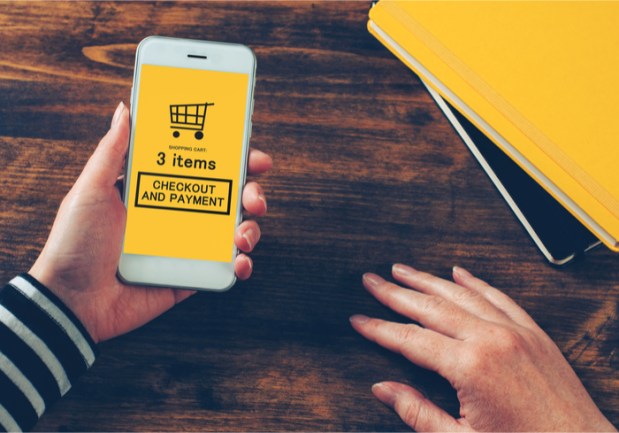How Supermarkets Can Tap Into Self-Checkout Tech

To help customers avoid the lengthy lines of traditional checkout counters, supermarkets are turning to self-checkout technology, along with revamped store designs. When retailers don’t have to dedicate space in their brick-and-mortar locations to cash registers, consumers can enjoy less friction during checkout. To make this a reality for established retailers, companies such as Standard Cognition are working to put self-checkout technology in existing stores.
To enable customers to check out without a cashier, some solutions use shelf sensors to keep track of selected items. But this technology can come with downsides, such as cost and time-consuming installation. For a more efficient solution, companies like Standard Cognition use cameras installed on the ceiling, along with computers in the back of the store.
“We want stores to be able to create the experiences they want,” Standard Cognition Co-founder and COO Michael Suswal said in an interview with PYMNTS.com. Instead of a one-size-fits-all approach, Standard Cognition’s checkout systems can be installed in different formats.
In the case of Standard Cognition’s own store, which is opening this summer, the checkout experience starts when a customer walks in and takes out his or her phone. To start ringing up items, customers check in through an app and can then put their phones away, as the technology does all the work.
“There’s no gates or scanning involved,” Suswal said, adding that the system requires neither a QR code nor technology such as facial recognition. Developing a system without biometric technology was a challenge, he said, but by taking a stricter approach to privacy, Standard Cognition can better serve a range of international markets that might have higher privacy standards.
The Advent of Cashier-Less Technology
One of the most highly publicized examples of cashier-less check out is Amazon Go in Seattle. In order to shop in the store, customers must first download the Amazon Go app on their mobile devices and scan the app upon entering. After shopping, customers don’t have to check out when exiting. Instead, the store uses cameras and sensors on shelves, as well as a computer vision system, to scan the items being purchased and automatically charges them to the shopper’s Amazon account.
To reach new brick-and-mortar customers, Amazon is including such high-tech conveniences as speedy checkout, which eliminates the need to wait in lines to pay. While Amazon Go doesn’t need cashiers, there will be employees who perform such tasks as checking IDs for alcohol purchases and preparing food in the store’s kitchen. Already, the store has proven to be a hit with customers – but Amazon is not the only major retailer that has experimented with the technology.
In the U.K., Tesco is testing a checkout-free payment method on its corporate campus at a Tesco Express convenience store, Daily Mail reported. “Using your mobile device, you select some products, put them into your basket on your device and then just walk out of the store,” said Tesco Convenience Transformation Director Steven Blair. “The feedback is very good on it, but it’s super early.”
While the smartphones of certain staff at Tesco can use the service through an app called Scan Pay Go, the experiment might be conducted more widely if it proves to be successful. To alleviate security and theft concerns, companies like Standard Cognition offer technology that alerts staff members if someone walks into a cashier-less store and doesn’t register with an app.
The Road Ahead
In terms of international expansion, companies like Standard Cognition are looking to tap into markets such as Japan. Suswal noted that retailers in Japan have different concerns than those in the U.S.: They have profitable retail operations, but “they don’t have enough people to really expand their chains of stores to more locations.” Self-checkout technology can help retailers reduce those labor requirements. Retailers in the U.S., however, have a different focus: They are looking to bring shoppers new and exciting ways to experience their stores, particularly with eCommerce shopping options.
Overall, the market for self-checkout technology is vast and available to many companies. “There’s lots of room in this market for several players to operate in,” Suswal said. At the same time, he predicts that widespread adoption of the technology might not happen for a while – perhaps as long as a decade. That said, he believes that within three years, every consumer will have shopped at a store that offers self-checkout.
